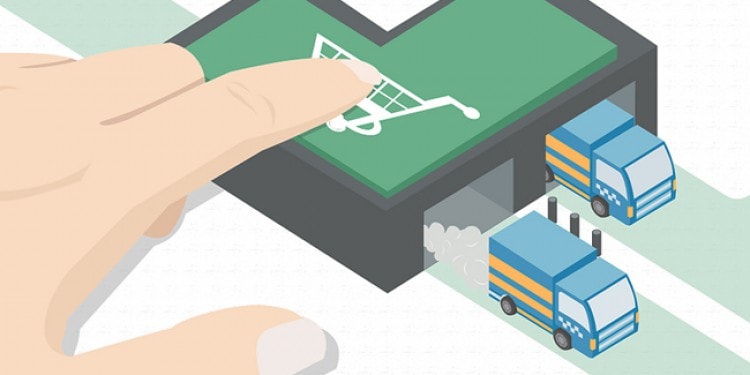
If you have an Ecommerce business, sooner or later your website is bound to experience a 404s error. After all, dead links are quite common in Ecommerce stores. Whether it is due to a changing CMS system, an aging product inventory or landing pages of previous marketing promotion, you will end up with URLs on your store that no longer direct to any platform.
But, 404s errors are quite dangerous. They impact your SEO ranking as well as illustrate lost revenue. Seventy-seven percent of people who get a 404s error abandon the site. The more broken links you have, the lower Google will rank your website.
You must learn to manage 404s errors in your Ecommerce store. If not, you might be dealing with unsatisfied and frustrated customers.
Here is how you can effectively manage 404s errors on an Ecommerce store.
Always have a customized error page
Let’s face it. Regardless of how much you try, you are bound to end up with links that lead to a 404s error. So, you must ensure you are ready when it does happen. How can you prepare yourself for it? Well, by looking presentable when it happens. This is why you need to create a customized error page rather than using a default one.
After all, if your Ecommerce site shows a 404s error, you can expect frustrated customers. And that equals a missed sales opportunity. A default template that merely states that an error has occurred would guarantee that your customers will leave. However, a customized error page, along with a redirect to the store can help in salvage some of the potential customers. Not to mention you can ensure that your brand image remains intact by customizing the error page to reflect the same type of language and color scheme as the rest of your store.
Tell users why the 404s error occurred and post links
According to SEO Blog, the best way to manage a 404s error on your Ecommerce site is by being transparent about it to your customers. Be upfront and tell them exactly why the error page is being displayed. Is it because you have run out of the product? Or has the page been moved to another URL? Relay the reason to them. This will make your customer feel informed. This is much better than leaving them clueless and confused.
While you are at it, give them relevant information by redirecting them to other information pages of your store. You will be surprised how many customers are lost because once people reach a broken page, they exit the store rather than going back. To stop this from happening, you can add relevant links to your error page. This can be either Faq, customer support or your popular product pages. With a link present in front of them, there is a high chance that they will click on it and go to the next landing page.
Monitor your site
While it is essential for you to have a customized 404s page and proper content in it, you must also strive to reduce the number of links that lead to 404s error. You might not be able to reduce the instances to zero, but with regular monitoring, you can come quite close. After all, broken links do negatively affect your business’s SERP.
Therefore, make sure to monitor your website regularly. Conduct monthly or weekly check-ups whereby you thoroughly check all links on your Ecommerce store. Remove any broken link that is present to improve your ranking.
Hire experts
How do you clean up broken links and manage 404s errors? Well, you will need to use tools like Google Search Console and Screaming Frog. Now, not everyone knows how to use these tools. This is why it is important to hire those who do.
Hire experts for your Ecommerce site who are well versed on using crawling tools. When it comes to managing SEO or cleaning broken links, such tools are your biggest hope. And you need the right people to operate them.
Learn to prioritize
In Utopia, there would be no such thing as a broken link in an Ecommerce store. However, we live in the real world where it is humanly impossible to identify and fix every broken link as soon as possible. After all, fixing links is not a piece of cake. Instead, it is a time-consuming process that requires various tools and expert knowledge.
So, a time will come when you will find a lot of broken links in your store. While we are not asking you to leave any behind, you must decide which link to fix first. Learn to prioritize based on the importance of the given link. Does it get high traffic? Is it likely to increase the bounce rate? If so, deal with it first.
Also, make sure you do address each broken link in due time. This ensures that you don’t end up with a never-ending pile of broken links and a low sales turnover.
Conclusion
No, managing 404s pages and broken links are not easy. Especially not for an Ecommerce website. After all, an Ecommerce store is full of links and URLs. Even with regular monitoring, the task can get cumbersome.
Therefore, make sure you prioritize fixing and managing broken links in your SEO strategy. Unless you give it enough of your attention, broken links will persist and will continue to affect your ranking.
Remember, customers, appreciate a fast and seamless Ecommerce experience. A broken link hampers this. But, if you deal with it wisely by redirecting them to other information or product pages, you might end up salvaging the sale.
In terms of meeting your bottom line and ensuring loyalty among customers, managing broken URLs is worth the effort. Invest your time, money and efforts in maintaining and monitoring 404s page. Benefit from better sales turnover than before as a result of it.
